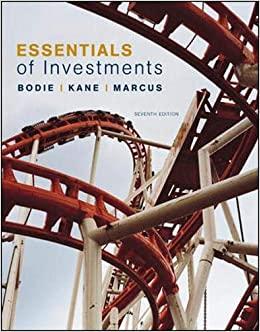Question
The CEO of SHB-Brooklyn Capital Management asks you 1) to analyze the term structure of yields; 2) price a 8% semi-annual coupon bond maturing in
The CEO of SHB-Brooklyn Capital Management asks you 1) to analyze the term structure of yields; 2) price a 8% semi-annual coupon bond maturing in 7 years. To price the corporate bond, you need to implement a Nelson-Siegel-Svensson model following the below steps. 1. Find daily treasure yield curve rates on 12/04/2017 using Daily Treasury Yield Curve Rates provided by the US Department of Treasury1 and report those daily rates (i.e., 1 Month, 3 1 http://www.treasury.gov/resource-center/data-chart-center/interest-rates/Pages/TextView.aspx? data=yield 1 Month, 6 Month, 1 Year, 2 Year, 3 Year, 5 Year, 7 Year, 10 Year, 20 Year, 30 Year) and plot the yield curve. Note that all the yield curve rates are continuously compounding interest rates. 2. Download daily treasure yield curve rates on 12/03/2018 from the US Department of Treasury2 and report those daily rates (i.e., 1 Month, 3 Month, 6 Month, 1 Year, 2 Year, 3 Year, 5 Year, 7 Year, 10 Year, 20 Year, 30 Year) and plot the yield curve. 3. Analyze each shape of the yield curves from problem 1 and problem 2 and compare them. What is your findings? Provide your thoughts about market expectations as of 12/04/2017 and 12/03/2018. 4. Using the yield rates as of 12/04/2017 let us implement the Nelson-Siegel-Svensson four factor model as: y(t) = 1 + 2( 1 e 1t 1t ) + 3( 1 e 1t 1t e 1t ) + 4( 1 e 2t 2t e 2t ) where 1, 2 > 0. (a) Estimate six parameters including 1, 2, 3, 4, 1, and 2 solving the below equation: min 1,2,3,4,1,2 X 30 t=1 (y(t) y(t))2 (b) Report 0.5 year, 1.5 year, 2.5 year, 3.5 year, ..., 29.5 year, and 30 year yield rates that estimated from the model. (c) Plot a combo chart displaying the original yield rates and the estimated yield rates over the entire time horizon. 5. Using the yield curve rates as of 12/03/2018, repeat all the steps (i.e. (a), (b), (c)) in problem 4. 6. Compute two 7 yea semi annual coupon bonds with a coupon rate of 8%: 1) using the spot rates from problem 4, and 2) using the spot rates from problem 5. Note that a face value is $ 1,000 and continuously compounding rates. P = X T t=0.5 CF(t) e y(t)t (1) Where: P represents the price of a bond. CF(t) represents a bonds cash flow at time t. 7. Look into two different bond prices. Do you observe a significant price difference between them? If so, what does this gap mean? Provide your thoughts.
Step by Step Solution
There are 3 Steps involved in it
Step: 1

Get Instant Access to Expert-Tailored Solutions
See step-by-step solutions with expert insights and AI powered tools for academic success
Step: 2

Step: 3

Ace Your Homework with AI
Get the answers you need in no time with our AI-driven, step-by-step assistance
Get Started


